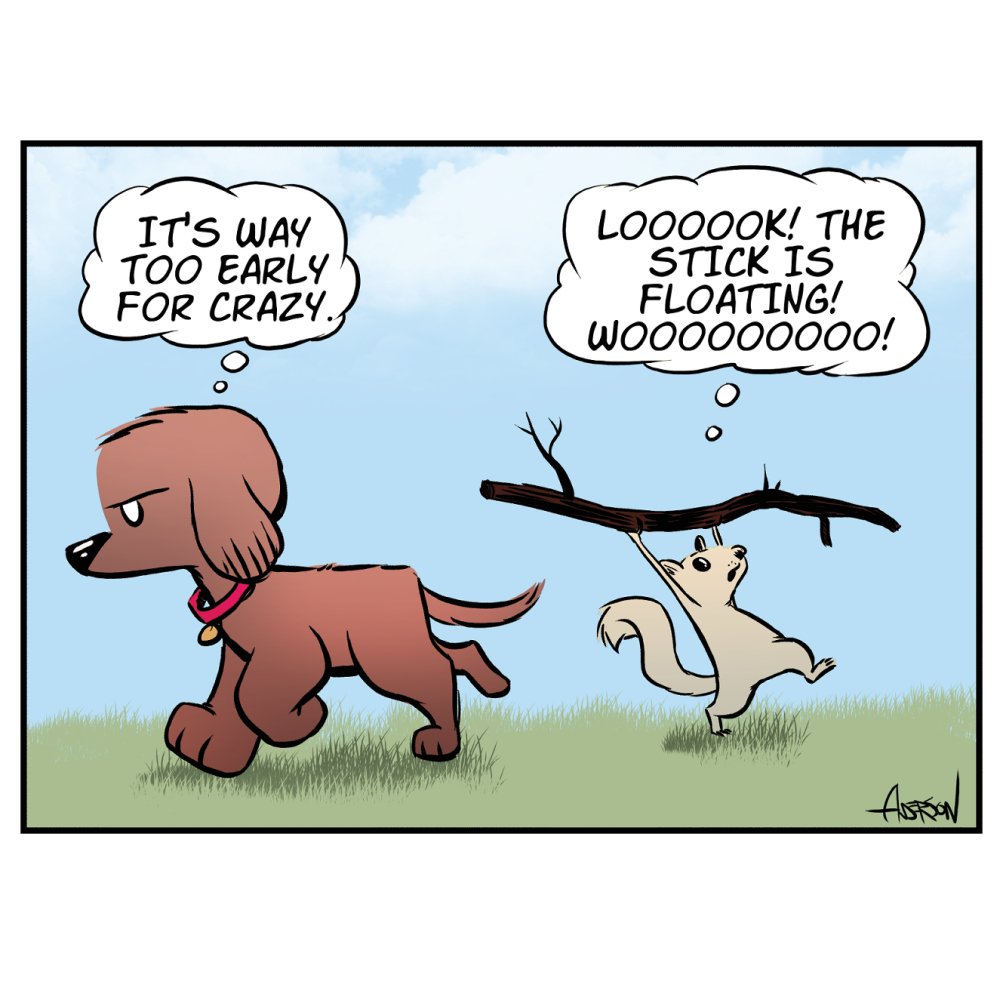I have to admit, the squirrels might be my favorite characters. They add insanity and unpredictability that even I don’t see coming. That’s been expanded in the upcoming graphic novels. The squirrels go on crazy adventures with Sophie but also break the fourth wall and interact with the reader. This is something I never did in the comic strip. Just you wait.
In the meantime, I’m going to keep taking a break from the comic world and share more dog and cat related information. While today’s comic strip is funny, a dog with a strong prey drive can present unique challenges for pet owners. I’ve been lucky and haven’t come across any severe cases, which I’m thankful for given I have cats.
Understanding how to effectively handle and manage this instinctual behavior is crucial for the well-being of both your dog and those around them. In this blog post, I’ll share five valuable and basic tips to help you navigate and control a dog with a strong prey drive. But if you have a dog with a severe prey drive, I’l direct you straight to the last tip.
Proper Socialization and Obedience Training:
Start early: Socialize your dog from a young age to expose them to various environments, people, and animals.
Enroll in obedience training classes to establish a strong foundation of commands like "sit," "stay," and "leave it."
Consistently reinforce positive behaviors through rewards and praise, redirecting their attention away from prey.
Secure Fencing and Leash Control:
Ensure your yard is securely fenced to prevent your dog from chasing and potentially harming wildlife or other pets.
Use a sturdy leash when walking your dog outside, maintaining control and preventing impulsive dashes after prey.
Consider using a leash designed specifically for dogs with a strong prey drive, providing additional control and security.
Environmental Management:
Minimize exposure to triggers that activate your dog's prey drive, such as wildlife or small animals in your yard.
Close windows or use curtains to limit visual stimuli that may trigger excitement and chase behavior.
Keep your dog leashed or in a secure area when visitors or delivery personnel arrive to prevent impulsive chasing.
Engage in Physical and Mental Stimulation:
Provide ample physical exercise through regular walks, runs, or playtime, helping to drain excess energy.
Offer interactive toys, puzzles, and mental stimulation games to redirect your dog's focus onto constructive activities.
Engaging their mind and body will help channel their energy away from instinctual prey-driven behavior.
Seek Professional Guidance:
If your dog's prey drive poses significant challenges, consider consulting a professional dog trainer or behaviorist.
They can provide tailored strategies, behavior modification techniques, and personalized guidance for managing your dog's prey drive.
Expert advice can make a substantial difference in understanding and addressing this natural instinct.
Handling a dog with a strong prey drive requires patience, consistency, and a proactive approach. By implementing proper socialization, obedience training, secure fencing, leash control, environmental management, providing physical and mental stimulation, and seeking professional guidance when necessary, you can effectively manage your dog's prey drive. Remember, each dog is unique, so be prepared to adapt these tips to suit your dog's specific needs. With time and effort, you can foster a balanced and harmonious relationship with your furry companion while keeping their prey drive under control.







